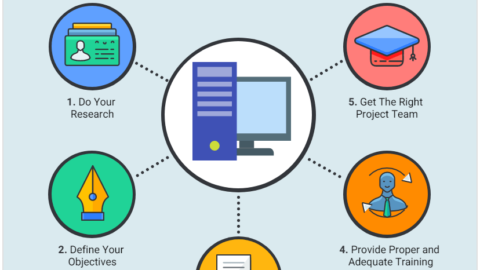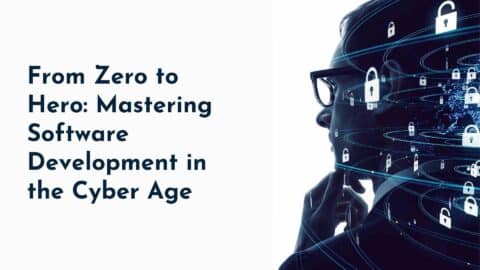9 Security Tips for the Software Development Lifecycle
Thanks to software development, incredible transformations have occurred in every industry, whether health, finance, or entertainment. It has led to the creation of robust systems and applications that companies use in their daily operations. However, with the increasing cyber threats and complex hacking methods, it’s good to have excellent security measures in the software development lifecycle (SDLC). This helps you minimize the vulnerabilities from the inception to deployment phases. Here are nine tips to consider when enhancing your security as you develop robust software.
Table of Contents
How do you ensure security in software development?
Ensuring security in software development involves several practices, such as conducting thorough risk assessments, implementing secure coding practices, regularly updating and patching software, conducting security testing, implementing access controls, encrypting sensitive data, and staying updated on the latest security vulnerabilities and best practices.
What is a security requirement in software development?
A security requirement in software development is a specification or constraint that aims to protect the software and its users from potential threats. It may include measures like user authentication, data encryption, secure communication protocols, access controls, audit trails, and compliance with relevant security standards and regulations.
1. Plan Your Security Strategy
Before proceeding with the coding work, it’s advisable to have a strategy in place regarding security measures. It acts as a sense of direction with which all your actions need to align. For the strategy to work, it’s crucial to spot the threats that are likely to occur. Highlight the vulnerabilities your software will likely experience depending on its nature. Make this evaluation in the context of the user’s experience, as this will determine your tool’s intuitiveness and user-friendliness.
However, as you do the risk assessment, have a procedure to prioritize the threats. Do this based on their possibility of occurrence and the impact. Consider developing the right security plans to address these problems whenever they emerge. Have the right policies, procedures, and clear guidelines on how specific processes need to take place. This not only addresses the problems but also helps avoid confusion whenever an issue arises. The advanced threat modeling techniques help your team know more about the attack vector. It allows proper visualization and design of the software with security in mind.
2. Use Secure Coding Practices for Software Development Lifecycle
Your software development life cycle is majorly dependent on the coding work. You need to stick to the best practices to make sure that the security standards are high. Your team should be more skilled and informed about the latest coding guidelines. Go for the security-focused coding standards; a good example is the OWASP Top Ten. Look at the buffer overflows. Your focus should be on the side of your game and the future improvements you may like to embark on.
Address the cross-site scripting and SQL injections and know how the action plan should occur. However, ensure consistency by doing proper code reviews even after getting the coding right. Use the static code analytical tools since you’ll easily spot the security issues across the different stages of development.
3. Protect the Containerized Applications
During the different developmental stages of the software, there are particular vulnerabilities that hackers concentrate on. Ensure the handling of the data or the network protocols are effective. Look at every phase and the respective risks that exist. In the build-time, make sure that the container images and codes are free from any vulnerability. This gives a strong and secure foundation for your application.
During the deployment step of Software Development Lifecycle, ensure that the configurations are excellent. Learn also about the container runtime security measures that you can apply. It helps in making the application secure as it is going live. It also addresses any threats that can emerge at this stage, originating from the build and deployment stages.
4. Regularly Update and Patch Dependencies
Software development Lifecyle needs third-party frameworks and libraries. These components make the development process much faster, which can be relevant when working on an extensive project. However, there is a need to address any vulnerabilities these frameworks may bring. It occurs whenever they aren’t updated to the latest security level.
Be more active in monitoring the dependencies. Ensure that the patches are in place, as this removes all the weak points suitable for your project. Consider automation tools since this makes the whole process seamless.
5. Conduct Comprehensive Security Testing
In the developmental stages, the existing threats need prompt addressing as this makes them more economical and efficient. However, it’s essential to do proper testing on the tool to see if it defends itself from attacks. The perfect way to do it is by performing security tests such as penetrative testing. It simulates the application’s capacity to keep at bay the attempts.
Additionally, embark on a code analysis to spot the security flaws within the codebase. Making the necessary changes to make the program more robust and effective can be possible. Make consultations with experts when trying to decide the adjustments to make.
6. Security Review of Software Development Lifecycle
During the design phase, the software development team should work with security experts to regularly review the design architecture. It fits into the security plan and best practices. Security reviews involve analyzing the software to ensure it meets the organization’s security requirements, protects against known and unknown threats, and satisfies the latest regulatory and compliance requirements.
7. Enforce Proper Data Handling
Consider implementing encryption on the sensitive data when not only in transit but in rest status. Ensure that encryption keys are securely stored and accessible only to authorized personnel when needed for decryption. Developers are using cryptographic algorithms and the proper practices for management work. Put much focus on the HIPAA and GDPR guidelines as you do this.
When doing the audits, ensure that data handling mechanisms are compliant. Additionally, regularly creating backup copies of all stored data ensures recovery in case of data corruption or loss. Keep backups offsite to safeguard against local incidents such as fires or floods.
8. Establish an Incident Response Plan
Even after putting in place all the necessary safety measures for the software development process, you need to think of possibilities of unplanned happenings. Undesired incidences can occur, and laying down the correct remedies is essential.
Clearly state the steps you’ll take whenever such security breaches take place. This gives you peace of mind, knowing you can restore normalcy even when an issue arises. Consider the forensic analysis and communication protocols even as you develop the remediation protocols.
9. Secure Deployment
After testing and review, the software development team is ready to deploy the software. During this phase, the team should ensure the deployment process is secure to prevent security incidents. It is also essential to secure servers and databases, establish access controls, and monitor the system for anomalies. Before deployment, the software team should ensure that all servers, networks, and other infrastructure have adequate security measures and thoroughly test all facets.
Endnote for Managing Software Development Lifecycle Security
As you embark on software development, ensuring top-notch security standards are paramount. Have sound plans to guide the different phases of development and state the common vulnerabilities. Remember to have the best strategies that guide your team’s action plans whenever an issue emerges. Adopting these security tips for the software development lifecycle will provide much-needed protection against the ever-evolving threat landscape of the digital world.

Adhar Dhaval is experienced portfolio, program and project leader with demonstrated leadership in all phases of sales and service delivery of diverse technology solutions. He is a speaker sharing advice and industry perspective on emerging best practices in project leadership, program management, leadership and strategy. He is working for the Chair Leadership Co.












